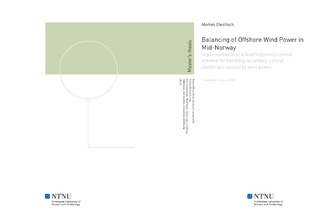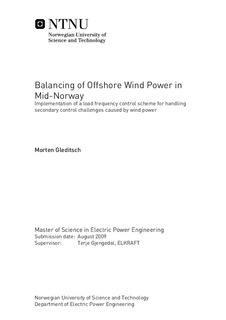| dc.contributor.advisor | Gjengedal, Terje | nb_NO |
| dc.contributor.author | Gleditsch, Morten | nb_NO |
| dc.date.accessioned | 2014-12-19T13:51:04Z | |
| dc.date.available | 2014-12-19T13:51:04Z | |
| dc.date.created | 2010-09-03 | nb_NO |
| dc.date.issued | 2009 | nb_NO |
| dc.identifier | 347969 | nb_NO |
| dc.identifier | ntnudaim:4875 | nb_NO |
| dc.identifier.uri | http://hdl.handle.net/11250/256543 | |
| dc.description.abstract | In order to comply with governmentally announced greenhouse gas emission reductions goals and to consolidate an independent and stable electric power and energy supply, Norway must increase its installed renewable energy based power generation capacity. Profitability estimations, today s available technical solutions and regulations concerning preservation of natural resources leave construction of new small hydro power plants behind as the most plausible alternative together with construction of wind farms. Global trends such as technologic development and progress and the public opinion indicate that future wind farms in Norway will be located offshore. The assumption is supported by the recent handing out of a concession to an offshore wind farm project for the first time in Norwegian history. The projects name is Havsul 1 and the licence involves construction of 350 MW offshore wind power. Havsul 1 will be located in Mid-Norway, which is the region in Norway where the Norwegian Transmission System Operator (TSO) Statnett is most concerned about their ability to execute their task of assuring safety of power supply in the future. The concern owes to lack of generation capacity and transmission constraints. Experience show that commissioning of large offshore wind farms will impose power balance associated challenges on the TSO. By applying a slightly modified model developed by Sintef of the Nordel synchronous system in the power simulation tool DIgSILENT PowerFactory, grid connection of 350 MW and 1000 MW offshore wind farms to a bus bar representing Mid-Norway were investigated, targeting reduction of frequency excursions. To execute the reduction task, a so-called centralised Load Frequency Control (LFC) scheme was implemented and four hydro power plants were designated to provide regulating power pursuant to a priority key that used their response times as input. To simulate power fluctuations in the time span of hours, real time wind data acquired from the Danish offshore wind farm Horns Rev 1 was used as input in the offshore wind farm model. These data were kindly provided by the Swedish power company Vattenfall. The power fluctuations simulations showed that LFC is a well-fitted tool for bridling frequency excursions in the Nordel synchronous system caused by fluctuating power generation in an offshore wind farm. During the power fluctuations, which were of a particularly challenging kind, the system frequency complied with Statnett s normal operation requirements of 50 ±0.1 Hz. The results weren t too surprising since LFC has been used successfully in Europe for many years. They did however show that the amounts of the so-called frequency controlled normal operation reserves in Nordel may need to be expanded in case of a massive expansion in wind power in Norway. Fault Ride Through (FRT) investigations were also conducted by introducing 3-phase short circuit faults at selected bus bars. The simulations showed that the FRT requirements in Norway were not violated even in the worst case simulations. Some choices regarding the setup of the model may have exalted the simulation results. | nb_NO |
| dc.language | eng | nb_NO |
| dc.publisher | Institutt for elkraftteknikk | nb_NO |
| dc.subject | ntnudaim | no_NO |
| dc.subject | MSELPOWER Master of Science in Electric Power Engineering | no_NO |
| dc.subject | Elektrisk Energiteknikk | no_NO |
| dc.title | Balancing of Offshore Wind Power in Mid-Norway: Implementation of a load frequency control scheme for handling secondary control challenges caused by wind power | nb_NO |
| dc.type | Master thesis | nb_NO |
| dc.source.pagenumber | 78 | nb_NO |
| dc.contributor.department | Norges teknisk-naturvitenskapelige universitet, Fakultet for informasjonsteknologi, matematikk og elektroteknikk, Institutt for elkraftteknikk | nb_NO |

